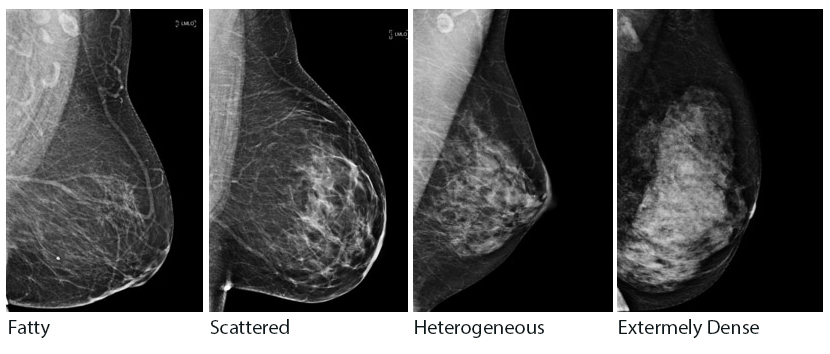Supplemental Breast Cancer Screening
Understanding Breast Density and Supplemental Screenings
Understanding dense breast tissue and supplemental screening options is crucial for proactive care. While mammography remains a cornerstone, additional tools like breast MRI offer enhanced detection, particularly for those at higher risk. The team at Riverside's Cancer Institute is committed to early detection and empowering patients with knowledge. From state-of-the-art imaging technologies to a comprehensive range of treatment options and support services, we provide a holistic approach to breast health.
To schedule your breast cancer screening call Riverside Outpatient Scheduling at (815) 935-7531.
Breast MRI Screening
A breast MRI is a supplemental screening option for women at high risk for breast cancer. MRI uses radio waves and strong magnets to take detailed images of the breast tissue.
This screening tool can find cancers not found on a mammogram. However, it is important to note that breast MRI is a supplemental screening and should not replace yearly screening mammography.
Talk with your primary care provider about your risk for breast cancer and whether a breast MRI is a supplemental screening option you should consider.
FAQ: Understanding Breast Density and Breast Health
Breast density cannot be determined through touch or visual inspection. It is assessed through mammograms by a radiologist during your routine screening.
While younger women tend to have denser breast tissue, it can affect women of all ages. Statistics show that many women in their 40s, 50s, 60s, and even 70s have dense breast tissue.
No, dense breast tissue is a natural variation in breast composition and is not considered a health problem. Many women across the United States have dense breast tissue without any associated health issues.
Dense breast tissue is a biological characteristic and cannot be altered through lifestyle changes. Instead of trying to change breast density, it's important to focus on regular breast health screenings and understanding personal risk factors.
Research suggests that 3D mammography may offer improved detection rates for women with dense breast tissue compared to traditional mammography. However, it's important to note that no screening method is foolproof, and supplemental imaging may still be recommended in some cases.
Mammography remains the primary screening tool for breast cancer detection. While supplemental imaging like ultrasound or MRI may be recommended for women with dense breast tissue, they are intended to complement mammography, not replace it. Always follow your healthcare provider’s recommendations for breast health screenings.
Breast density refers to the proportion of different types of tissue in the breast as seen on a mammogram. It primarily consists of glandular tissue, which appears white on a mammogram, and fatty tissue, which appears dark or transparent. Breast density is important because breast cancer can be harder to detect on a mammogram in dense breast tissue, and women with dense breasts have a slightly higher chance of developing breast cancer than women with fatty breast tissue.

Women who are told they have dense breasts should consider a breast MRI as a supplemental screening to mammography. Mammography is still considered the gold standard for breast cancer screening, but a breast MRI may be able to detect cancers not seen on a mammogram. If an MRI cannot be tolerated, women may also consider Automated Breast Ultrasound (ABUS) as a secondary screening. It is important to note that Breast MRI and ABUS do NOT replace screening mammography and should be done in conjunction with mammography.
No, all women should have a screening mammogram every year beginning at age 40. If you have additional risk factors, you should talk with your primary care provider about starting screening sooner.